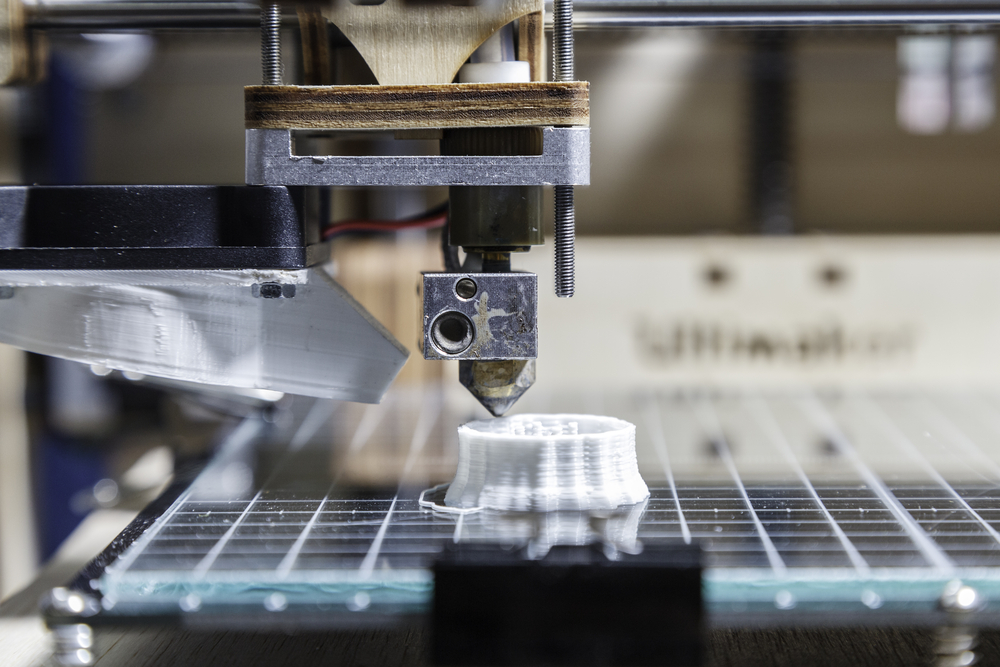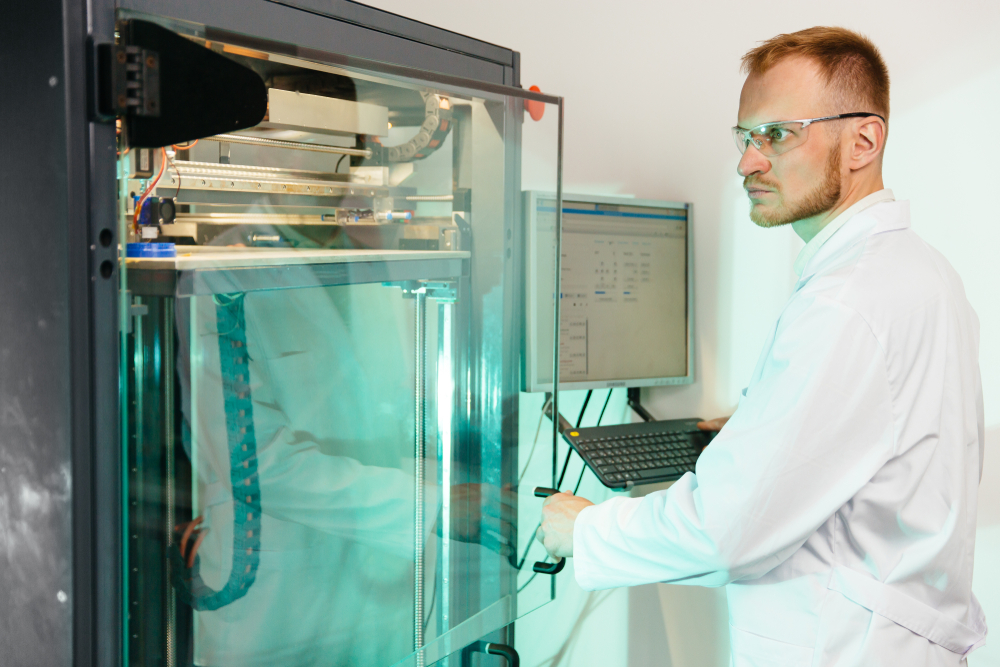No longer limited to prototyping, 3D printing is revolutionizing full-scale manufacturing and producing high-quality finished products. Initially developed for prototyping in aerospace, 3D printing is making a significant impact in other industries including healthcare and cosmetics. With greater flexibility in what a manufacturing site or line can produce, 3D printing can make supply chains more agile.
Traditional manufacturing processes require product-specific tooling. Retooling is also needed when there are product modifications or variations. With 3D printing, there is no tooling. A single 3D printing system can produce a wide range of products using a variety of materials—increasing production line flexibility and accelerating time to market. Supply chains that leverage 3D printing are agile, more resilient to unexpected disruptions, and respond better to changes in market demand.

How 3D Printing Is Changing the Manufacturing Industry
Traditional manufacturing processes, like CNC milling or injection molding, require significant upfront tooling costs. Manufacturers typically require high minimum order quantities to amortize the tooling costs across all units produced in a manufacturing run.
With 3D printing, the tooling costs to manufacture new and modified products and designs are eliminated. With no tooling and greater flexibility, 3D printing reduces the cost structure and risk, and changes the business model for manufacturers.
3D printing is changing the manufacturing industry and offers several advantages that enable agility.
Print On Demand
By eliminating tooling, a product design team can accelerate getting a new product or design variation into production. As long as production capacity is available at a 3D printing factory, a design can be sent to production and printed immediately. Multiple variations of the product can also be printed on the same machine without retooling.
Printing on demand in a timely manner can also enable companies to reduce inventory and print products as needed. With greater flexibility, companies can be agile, respond to market changes more quickly, test multiple prototypes, and get to market quickly.
Print Almost Anything
Traditional manufacturing processes require some level of retooling when a new part or product is produced. Designs are often altered to conform to the limitations of the tooling and fabrication processes. After initial test runs, product and tooling may also be altered to optimize the process or improve yield. In some cases, the product design requires changes due to low yield during test runs. This back-and-forth process increases time to market and limits design freedom.
With 3D printing, companies can print their full-scale production designs using the same process for prototyping. This ensures the product developed during prototyping is the same as the one in production. There are also fewer design constraints, so designers can produce finished products using a 3D printing process that may not be manufactured with traditional processes. With no tooling, retooling, and fewer design cycles, companies can get products to market faster.
Simplified Manufacturing Process
3D printing can reduce the number of steps to produce a finished product, simplifying the manufacturing process.
- Streamline design to production: It is not uncommon to redesign a prototype before it can go into full-scale production in a factory. With no tooling and the ability to produce parts with simple to complex geometry using a wide range of materials, companies can immediately print the finished product when the design is complete. The same process is used for both prototyping and production, eliminating test runs focused on recreating the prototype in a production environment.
- Part consolidation or amalgamation: With traditional manufacturing processes, a design may need to be broken down to multiple parts for production and then assembled. With 3D printing, multiple parts that might normally be welded, bonded, or attached with fasteners can be fabricated as a single finished piece. This reduces assembly costs and can also provide other benefits such as lowering the weight of the finished product and eliminating potential joint failures.
With simplified design to production processes, companies can quickly produce production parts without prototyping, testing, and redesign iterations. With greater flexibility, 3D printing is also enabling faster capacity adjustments and response to demand anywhere in the supply chain.

Manufacture From Anywhere
By eliminating the need for tooling, the barrier to entry for a new manufacturing service or facility leveraging 3D printing is much lower than with traditional processes. 3D printing can make local manufacturing cost-competitive with overseas operations using traditional processes. Rather than setting up a single large facility overseas, multiple smaller facilities can be set up closer to the designer or end customer. Manufacturing operations can also move onshore, aiding IP protection and limiting a company’s risk from political instabilities or natural disasters overseas.
How 3D Printing Reduces Supply Chain Risk
The ability to print nearly any product, anywhere, on-demand gives manufacturers the ability to adapt to supply chain and market demand volatility.
With a more flexible and agile manufacturing process, manufacturers can more quickly respond to global or local events, effectively reducing risk. Here are some ways 3D printing helps manufacturers become more agile and aids in supply chain stability:
- Augment local inventory on-demand: Printing on-demand and in any location helps companies quickly respond to local demand without holding large product inventories.
- More diverse product portfolio: Because 3D printing is so flexible, companies can produce a high mix of products with the same resources. Having a high mix of products also makes the customer base more diverse, which reduces financial risk.
- Tax and tariff optimization: Companies can design a supply chain that minimizes tax and tariff implications. Companies can optimize based on shipping finished goods versus separate parts to minimize tax and tariff burdens. In addition, the onshore of 3D printing manufacturing and assembly operations limits import tariffs because manufacturing is occurring locally.
- Greater productivity: 3D printing reduces labor and overhead with part consolidation and streamlined processes. In addition, the highly automated nature of 3D printing processes allows sites to run for longer hours and reduces labor costs.
As the market for a product changes, a company can quickly repurpose their 3D printing assets for new product lines. This simply isn’t possible with traditional manufacturing assets due to high tooling costs and human labor. Companies that can successfully incorporate 3D printing into their manufacturing and supply chain strategies will be more agile and can better meet and adapt to changing market demandsㅡgiving them a competitive advantage.
LuxCreo provides large-scale 3D printing solutions for manufacturing. We understand how 3D printing is changing the manufacturing industry, and we want to help our customers maximize the opportunity. When manufacturing is streamlined and more efficient, everyone benefits: suppliers, sellers, and consumers. Contact us today to learn more! Our friendly sales team is available for a chat at (650) 336-0888. We can’t wait to bring your manufacturing into the future.
